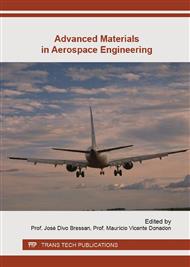p.140
p.153
p.161
p.167
p.179
p.202
p.218
p.234
p.255
Comparison of Mechanical and Microstructural Characteristics in Maraging 300 Steel Welded by PAW and GTAW Processes Submitted to Repair
Abstract:
Maraging steels are a special class of ultrahigh-strength steels which presents a combination of high mechanical strength, excellent toughness, high temperature strength and corrosion resistance. The joint of sheets/plates by welding processes are fundamental for aeronautical and industrial products in addition Brazil has been developing technologies in welding ultrahigh-strength steels such as AISI 4340ESR and SAE 300M steels for its domestic space launch program and has currently decided for the replacement of these steels by Maraging 300 steel in some projects. In this work, we studied the welding process of the Maraging 300 steel for two different routes: Tungsten Inert Gas (TIG or GTAW) and Plasma Arc Welding (PAW). Filler additions were used for both processes. Procedure after any welding demands non destructive testing and sometimes non approved defects considering the usage of the product require for welding repair. Verification of the effects of this operation was made through a simulation of a welding repair for both types of welding. Specimens were submitted to heat treatment consisting of a solution annealing and aging and their microstructures were examined. The microhardness measurements were made on samples with and without repair characterized the fusion and heat affected zones. Specimens were submitted to tensile testing and the fractured surfaces were examined by a scanning electron microscope. Results of microstructure exam revealed the presence of austenite (γ) in FZ (Fusion Zone). After the welding repair simulation, a new different colored zone appeared in the HAZ (Heat Affected Zone) for both processes due to reheating of the sheet provided by the repair process. In the HAZ near FZ an important grain growth due to the heating occurred. Also, close FZ that was submitted to new heating due to repair it was noted an apparent growing of grain size relative to original grain size. The microhardness measurements showed that there is a reduction in hardness in the FZ and the region immediately (fusion line) compared to base material values. After the aging heat treatment a recovery of hardness values took place in these regions but the values themselves remain smaller than the base material. It was observed an increase of values of the microhardness in dark regions in the HAZ provoked by a phenomenon of aging locally due to the dissipation of the heat of the welding process and posterior repair. After aging, those differences disappeared. It was observed that there was not a large difference between the yield and strength limits considering both processes of welding, as well as between both situations after repair. It could be seen that the rupture began in the region near FZ and followed in the direction of the weld bead. The analysis of the fracture surfaces showed that this happened by ductile way, forming dimples.
Info:
Periodical:
Pages:
255-264
Citation:
Online since:
January 2016
Price:
Сopyright:
© 2016 Trans Tech Publications Ltd. All Rights Reserved
Share:
Citation:


